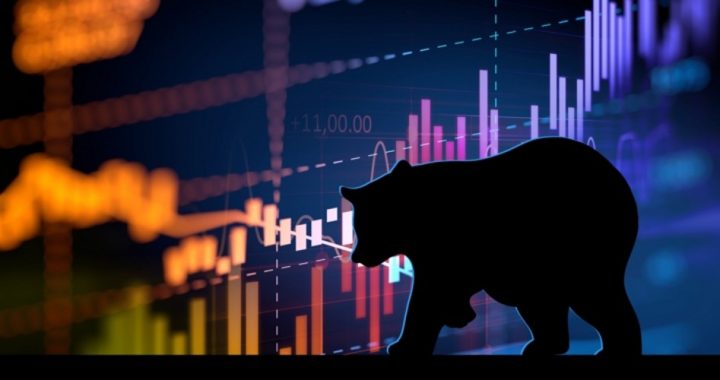
The selloff in stocks, which has taken more than 2,000 points and nearly eight percent off the Dow since October 3, has triggered much angst among market watchers and among some investors. Is the sell-off likely to continue? Is this a precursor to a decline in the economy? Has the economy peaked? Is the stock market telling investors there’s no place to go but lower?
Not according to managers of millions of investors’ funds, including Bruce Bittles, Robert W. Baird’s chief investment strategist: “The economic fundamentals remain favorable. Given the strength in the labor markets and confidence levels among small businesses, the odds of a business downturn are unlikely. We remain bullish on the U.S. economy.”
John Mallen, chief investment officer at Helios Quantitative Research, said, “We’re not overly worried about this being the early legs of a large-scale market correction in conjunction with a recession. I don’t see anything so dire from an economic data perspective that will create a 20% drawdown [i.e., a “bear” market]. I think [what has happened since October 3] is very technical in nature.” Added Mallen: “We might have a gut-check correction, but that might be a good buying opportunity for another good run.”
How much of a “good run” might that be? Robert Bacarella, founder and chairman of Monetta Financial Services, believes Trump’s tax cuts and overseas tax holiday have extended the bull market in stocks by at least another couple of years: “The bull market that started in 2009 is still intact.” Darrell Riley, a strategist at T. Rowe Price agrees: “The economy has a lot of momentum going into next year and monetary policy [interference in the economy by the Federal Reserve] is still stimulative. The economic cycle may go on longer than we think … [perhaps] a lot longer than we think.”
It’s really up to the Fed. As The New American magazine has pointed out, the Fed’s ramping up of interest rates, and its threat to continue to do so (in order to keep the economy from “overheating”), is putting sand in the gears of the greatest U.S. economic rebound seen in decades.
The Commerce Department reported last week that third-quarter GDP growth came in at 3.5 percent on an annualized basis, following a second quarter spurt of 4.2 percent. That makes it the strongest performance by the U.S. economy since the end of the dotcom bust in 2002. Unemployment remains at record lows, with formerly unemployed women entering the labor force in numbers never seen. Some 80 percent of American companies reporting earnings have exceeded Wall Street’s expectations, consumer and small business owner sentiment is at record high levels, and the beat goes on.http://ap.org/
To be sure, nervous nellies are watching the housing market closely to see if the decline in that sector has legs, thanks to interest-rate increases already inflicted on the economy by the Fed. The same goes for new car sales, and for the same reason. On the other hand, declining oil prices are being followed by lower gas prices at the pump, translating into a virtual tax-free wage increase for the country’s 222 million licensed drivers.
The best news has yet to hit the headlines: The Fed might back away from raising rates in December after all. The central bank’s preferred measure of inflation is the Dallas Fed’s price index for personal consumption expenditures, or PCE. During the third quarter that index rose on an annualized basis by just 1.6 percent, well below the Fed’s “target” of two percent. Word came from the Fed’s No. 2 man, Vice Chairman Richard Clarida, that discussion about backing off from raising rates in December is now on the table.
Speaking last week at the Peterson Institute for International Economics, Clarida (who just joined the Fed last month) said not only is the U.S. economy “very, very solid,” he added, “I believe that some further gradual adjustment in the federal funds rate will be appropriate.” This is code-speak for possibly taking the December rate hike out of consideration. As the Wall Street Journal noted, “some further” is a “subtle phrase” used in the past “to signal that officials are debating an end to such rate increases.”
At the moment there are two “camps” on the Fed’s Board of Governors: those who favor raising rates again in December, and those who don’t. The latter camp says that if price increases don’t appear to be moving beyond the Fed’s two-percent target, the board “might want to slow or suspend rate rises.”
Further supporting the latter camp’s position is the Fed itself. Last week the Fed’s “beige book” reflecting anecdotal information about economic activity in each of the Federal Reserve’s 12 districts showed “modest to moderate” economic activity as fall approached, with business owners remaining optimistic about the economy’s present growth trajectory. Notably missing was any feedback about costs of goods used in manufacturing getting out of hand, or painful needs to raise prices to offset increases caused by Trump’s tariffs strategy.
If the Fed even hints publicly that it might back off, the pressure on stocks would be greatly reduced or perhaps eliminated altogether, allowing the present bull market in stocks to push to new highs in the near future.
Along with the economy.
Image: monsitj via iStock / Getty Images Plus
An Ivy League graduate and former investment advisor, Bob is a regular contributor to The New American magazine and blogs frequently at LightFromTheRight.com, primarily on economics and politics. He can be reached at [email protected].
Related articles:



